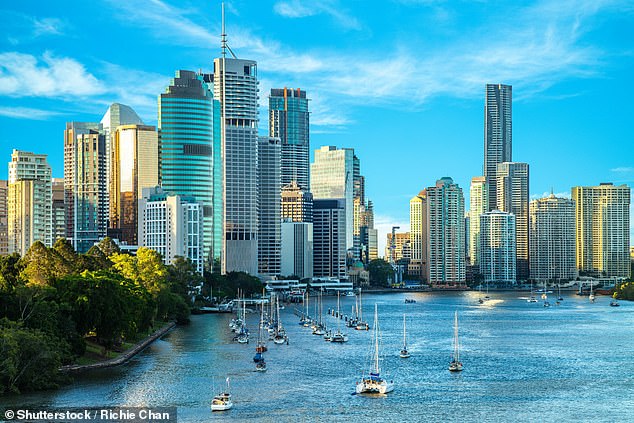Australia has been left out of an international study ranking the world’s best cities in 15 minutes, with no major city in the country making the cut.
He study Published by Nature Cities, a research team from Sony Computer Science Laboratories in Italy examined 10,000 cities around the world to find out how close they were to being 15-minute cities.
A 15-Minute City is an urban planning concept where daily needs and services can be reached within a 15-minute journey by public transport, on foot or by bicycle from any point in the city.
The concept aims to reduce car dependency, promote healthy and sustainable living and improve the well-being and quality of life of city dwellers.
Cities like Geneva, Paris and Berlin are in ideal times.
No Australian cities qualified as 15-minute cities, with Hobart narrowly missing out at 16 minutes.
Brisbane was the lowest-ranked Australian city in the study, with a time of 25 minutes.
Brisbane was the lowest-ranked Australian city in the 15-Minute Cities Study, clocked at 25 minutes.

Western Australia’s capital Perth scored 24 minutes in the 15-minute global cities study.

Sydney failed to qualify as a 15-minute city, with a figure of 19 minutes.
Not surprisingly, the study found that cities such as Rome, Tokyo, Auckland and Melbourne showed that residents living in the city centre or central areas had better access to services than those living in the outer suburbs.
“Our analysis consistently highlights patterns where city centres have better access to services than peripheral areas,” the study said.
The Nature Cities study noted that “substantial variations” were seen between the cities examined, depending on how car-centric the city is and the level of suburban planning.
Dr Alan Both, from the Australian Urban Observatory, said: 7News that Australian cities tend to be more dispersed compared to European cities, which are more compact and dense.
“We have cities with sprawling suburbs on the outskirts, and we don’t have the same density of people there,” he said.
Dr Both said the frequency and number of services available are the main factors in determining a 15-minute city.
“The average person is about 500 meters from public transportation, on paper we are doing pretty well, but if they restrict the measure to frequent transportation then we are doing pretty badly,” he said.
Experts suggest that adopting a policy focused on increasing services in peripheral suburbs is also an option for Australian cities.
This has been successful in other cities around the world.

Melbourne was one of the top Australian cities in the study at 17 minutes
“There are notable exceptions, such as Paris or Barcelona, whose recent policies to increase local access to services are well known,” the study notes.
‘These cities show more evenly distributed accessibility, transcending the typical centre-periphery divide.’
Dr Crystal Legacy, an associate professor of urban planning at the University of Melbourne, told the ABC: “We have a sort of tale of two different cities.”
“We have capitals with great public transport and higher densities in the central and inner neighbourhoods,” he said.
“But as we move into the central and outer suburbs… we’re seeing lower densities. We’re seeing public transportation becoming less frequent.”
Dr Legacy said that due to a lack of public transport and access to services, people living in the outer suburbs are more dependent on cars than inner-city residents.
‘Even though we have had policies in place for 30 years regarding 15-minute cities… but I think we have failed to implement them, particularly in areas that do not have high-quality public transport.’


